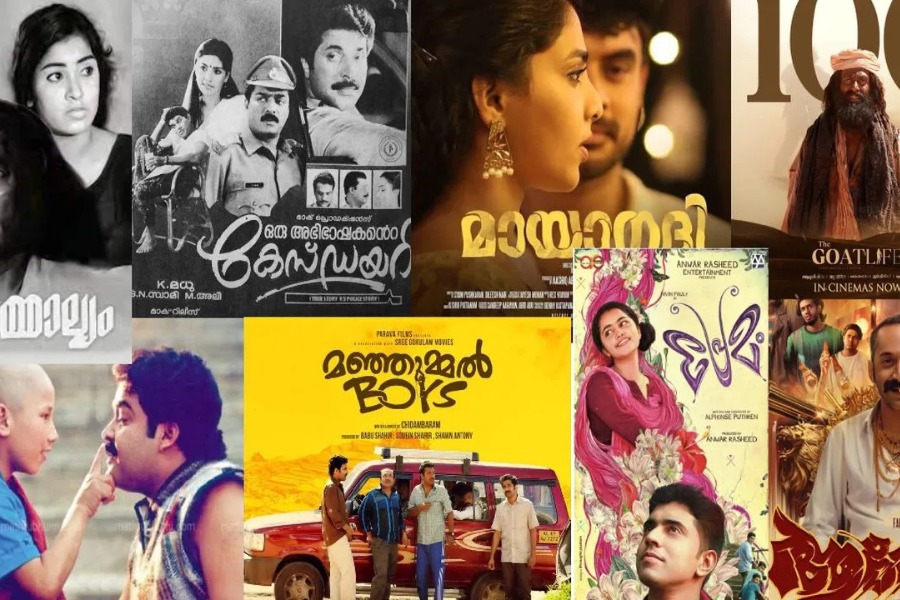Music has always been a central element of Malayalam cinema, deeply influencing its emotional and narrative impact. In the 1990s, composers like Ilaiyaraaja, Johnson, and Vidyasagar crafted timeless melodies that continue to resonate with audiences. The soulful music and intricate lyrics became synonymous with the emotional depth of the films. Songs were often integral to the storytelling, capturing the essence of the characters and situations.
Industry & Global Reach
Malayalam films primarily catered to the Kerala audience and Malayali diaspora. Bollywood remakes of Malayalam films (like Hera Pheri from Ramji Rao Speaking) helped gain some recognition outside Kerala.
Technology & Cinematography
Technology Limitations, Creativity Unleashed: With limited technological tools, filmmakers relied on exceptional acting and compelling scripts to captivate audiences. The 90s saw significant improvements in cinematography, but films were mostly shot on film reels, leading to a distinct vintage aesthetic. Songs were beautifully picturized, with a heavy reliance on picturesque Kerala landscapes.
The 20s:A New Era Of Experimentation and Innovation
Fast-forward to the 2020s Malayalam movies, and the industry has embraced modern technology, global platforms, and experimental narratives.Wide Genre Exploration: Movies like Drishyam 2, Jallikattu, and Joji have expanded the scope of storytelling, addressing themes like morality, ambition, and societal decay.
Global Recognition
Thanks to OTT platforms like Netflix and Amazon Prime, Malayalam cinema has reached a global audience. Films like Minnal Murali and The Great Indian Kitchen have received international acclaim.
Technological Leap
Enhanced cinematography, CGI, and sound design have brought a cinematic brilliance to modern-day Malayalam films.
New Generation Talent
Visionary directors like Lijo Jose Pellissery and stars like Fahadh Faasil and Parvathy Thiruvothu are redefining the standards of acting and storytelling.
Social Commentary:
Films like Nayattu and C U Soon delve deep into contemporary issues, presenting stories that resonate with both local and global audiences.
Diversity in Storytelling
The industry now experiments with unconventional narratives, blending realism with fantasy to captivate audiences worldwide.
Industry & Global Reach
The global reach of Malayalam cinema has expanded significantly. With films streaming on platforms like Netflix and Amazon Prime, non-Malayali audiences have started appreciating the brilliance of Malayalam storytelling. Movies like Drishyam, Kumbalangi Nights, and Jallikattu have received international acclaim, proving Malayalam cinema’s ability to compete on a global scale.
Conclusion
The evolution of Malayalam cinema from the 1990s to the 2020s is a remarkable journey of artistic and technological progress. While the 90s gave us timeless classics rooted in Kerala’s culture, the 2020s have pushed boundaries, gaining international recognition. Both eras have their unique charm and continue to influence and inspire cinema lovers worldwide. Which era do you resonate with more—the nostalgic charm of the 90s or the bold creativity of the 2020s? Share your thoughts in the comments below!
